Read Reviews
The Best Soil pH Testing Kits
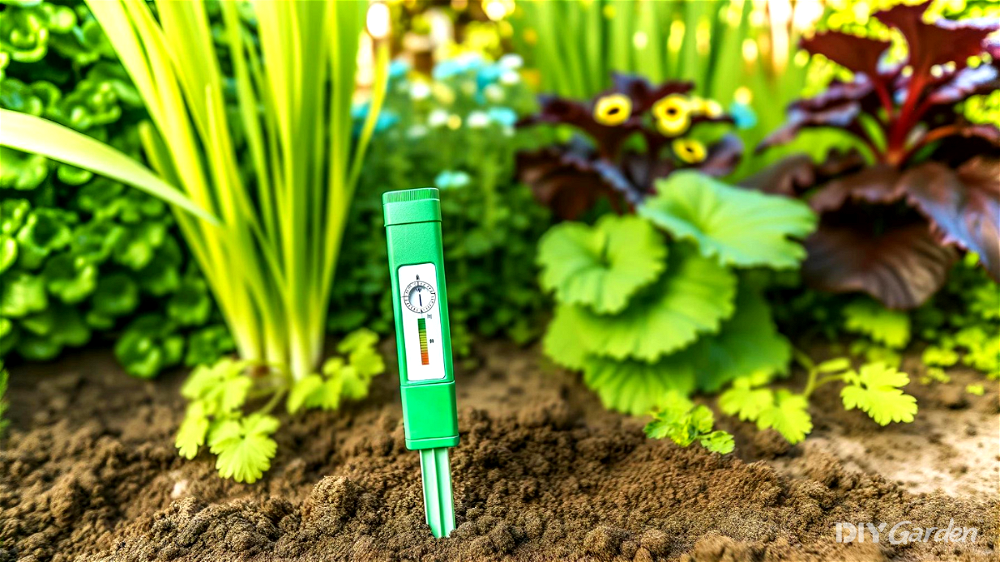
-
Best pH tester overall - Sonkir MS02 3-in-1 Soil Testing Kit
-
Best 4-in-1 tester - Sonkir 4-in-1 Soil Testing Kit
-
Best pH testing strips - Luster Leaf pH Soil Tester
-
Best value for money - Soil pH Test Strips
Soil pH Testing Kit Reviews
1. Sonkir MS02 3-in-1 Soil Testing Kit[ SAVE 15% ]
Best pH tester overall
- Easy to switch between the three modes using one simple button
- No batteries are required, making it good value for money
- It can be used both in the garden and to test the soil of houseplants
- The display is relatively clear and easy to understand
- Does not work in very dry soil - soil needs to be damp for the probes to pick up information
- Due to its small size it may be a little flimsy so needs to be handled with care
- The pH prong needs to be cleaned regularly in order to get accurate readings
- pH Sensor Range
- 3.5 - 8 pH
- Type of Tester
- Probe
- Tests Moisture?
- Yes
- Tests Light?
- Yes
- Accuracy
- 4.7
- Ease of Testing
- 4.7
- Value for Money
- 5
It turns out that checking soil pH doesn’t need to involve either battery-powered machines or any kind of litmus test. With the Sonkir MS02 3-in-1 Soil Testing Kit, you can find out the pH of your soil just by inserting this gadget’s two metal probes into the ground.
Displaying the information on a mechanical dial display, the pH reading is indicated by the needle pointing to the corresponding position on the scale.
You can also flip between three different modes, so it can give you readings for moisture and light levels as well as pH. The switch to change between options is clearly placed, and intuitive to read, much like the rest of the machine.
Considering that you’ll never need to buy any batteries for this device, it’s one of the best soil testing kits in terms of value – especially as it offers three functions in one.
It’s really small and lightweight, measuring just under 30 cm long and 5 cm wide, so it can be stuck both in soil outside, and in flowerpots indoors. To get a reading you need to wait around 10 minutes, during which time the probes should be left in the soil. After use, the meter needs to be cleaned and stored somewhere dry – it should not be left outside indefinitely.
A couple of things to note with this tester: firstly, the pH probe may need cleaning, perhaps even with a wire brush, before it can accurately detect the alkali/acidity levels in the soil. Secondly, if the soil is very dry, the meter won’t pick up any readings, so you may struggle to get results in the summer (although, knowing our UK summers… there will probably still be enough rain for this not to cause a problem!).
Did you find this review helpful?
2. Sonkir 4-in-1 Soil Testing Kit
Best 4-in-1 tester
- Useful for understanding the all-round growing conditions of plants to know how to better look after them
- Readings seem to be sufficiently accurate and on par with some slightly more expensive digital testers
- Easy to understand how to use, and easy to understand readings
- Good for looking after specific plants that need particular pH, moisture, light and temperature conditions
- The screen’s battery-saving automatic switch-off can turn off a bit too quickly when measuring results
- The battery will eventually need replacing which isn’t the case with solar-powered pH testers
- pH Sensor Range
- 3.5 - 9.0 pH
- Type of Tester
- Probe
- Tests Moisture?
- Yes
- Tests Light?
- Yes
- Accuracy
- 4.5
- Ease of Testing
- 4.5
- Value for Money
- 4.5
One of the nicest things about gardening tools is that a lot of them have the potential to be multi-functional. This Sonkir 4-in-1 Tool Kit not only checks the pH of soil, it also gives information on soil temperature, soil moisture, and light availability.
Displaying this information on a backlit LCD screen, the data provided by this soil test kit is easy to read and provides useful insight into how better care for your plants. Overwatering can be just as much of a plant-killer as having the incorrect pH, so this device could be a bit of a life saver for combatting both factors.
As gardening tools go, this soil test kit is fairly compact, with the probe measuring just 20 cm long – it’s therefore small enough to be useful in both indoor and outdoor plant pots, as well as in flowerbeds themselves.
Due to its price and how easy the data is to read and interpret, it’s also one of the best soil test kits for beginner gardeners; it clearly displays a lot of information that will be invaluable when first starting out in the complicated world of plant care.
Whilst some pH readers are solar-powered, this particular soil test kit requires a 9V battery. One comes included, so you don’t have to supply your own straight away. To save power, the screen switches itself off automatically after a certain amount of time. Of course, this ends up being both good and bad. On the one hand, saving battery life is great, of course, but on the other, it can sometimes switch off a bit abruptly when you’re still trying to take a reading from the soil.
The information about light and soil moisture is displayed on screen regardless of which mode is selected, but you need to use the switch on the back to change between reading pH levels or the temperature.
Did you find this review helpful?
3. Luster Leaf pH Soil Tester
Best pH testing strips
- The pH readings are accurate enough to be useful for beginner gardeners as well as many more experienced gardeners as well
- A colour chart comes included so that it’s easy to immediately compare it against your test sample and check the pH of the soil
- Comes with an informative booklet detailing the optimum pH for over 450 plants so can look this information up whilst outside gardening
- 10 tests included so you can check the pH in many locations or see how it changes over time
- A finite number of tests are included, meaning that battery-powered testers may be considered better value for money (though they can be less accurate)
- Not as accurate as getting soil professionally tested, so some expert gardeners may require a higher level of accuracy
- Slower than battery powered testers, with a pH reading displayed in around 2-3 minutes
- The colour of the soil in the sample can make the colour hard to read sometimes, so you may need to wait 10 – 15 minutes to wait for the soil to settle
- pH Sensor Range
- 4.5 - 7.5 pH
- Type of Tester
- Capsule system
- Tests Moisture?
- No
- Tests Light?
- No
- Accuracy
- 4.5
- Ease of Testing
- 4.5
- Value for Money
- 5
This is one of the best soil pH testing kits if you prefer to use a litmus test. These give accurate readings alongside value for money (arguably, a winning combination of factors!).
The Luster Leaf pH Soil Tester comes with 10 tests, so you can check the soil samples 10 times/in 10 different locations. This soil test kit is therefore a really great option if you’re trying to work out where to plant a specific flower or shrub, or are working to change the pH of your soil.
It doesn’t give any other readings, so you can’t find out about soil moisture levels or any other statistics, but within 2 – 3 minutes it’s possible to see whether the soil is alkali or acidic.
These tests seem pretty accurate, given that they use a chemical process to show the pH, so you’re not relying on any machines to give readings. And, although buying this kit, with a finite number of tests, might not seem as logical as buying a long-lasting digital reader, it is worthwhile in its simplicity.
A handy colour chart comes included to measure your readings, and it also has the added fun of feeling like you’re back in school chemistry lessons – mixing components together and seeing how the colours change.
Whilst this doesn’t substitute getting soil testing by a professional, it does give enough information for beginner gardeners. If you’re just trying to work out what to plant where, and how to organise your new beds, it should provide all the information you need, quickly, easily, and sufficiently accurately.
Did you find this review helpful?
4. Soil pH Test Strips
Best value for money
- Can be used to test soil as well as other substances such as pond water
- Any soil can be tested, no matter if the ground is hard or soft, because the sample needs to be added to water regardless
- The results are shown in around one minute
- Offers good value considering as there are enough strips for 100 tests
- Comparing the four-colour reading with the coloured pH scale can make it difficult to accurately interpret the results
- You need to use either distilled water or rain water to mix the samples
- More time consuming than dry ‘probe’ tests as you need to measure out soil and water
- pH Sensor Range
- 0 - 14 pH
- Type of Tester
- Strips
- Tests Moisture?
- No
- Tests Light?
- No
- Accuracy
- 4.4
- Ease of Testing
- 4.5
- Value for Money
- 5
With these Soil Test Strips by Not Application, you have, to be honest, probably more opportunities to test your soil than you’ll even need; 100 soil tester strips come in the small bottle, and they’re suitable for testing soil samples from both indoors and out.
If you’re trying to get an idea of the pH levels of several different flowerbeds, especially if you’re planning what you need to plant where, this is one of the best soil test kits in terms of value – they’re very inexpensive consider how many you get, and you can keep them for a long time too.
Unlike some other litmus-paper based tests, this soil test kit measures the full range of acid to alkaline: 0 – 14 pH (whereas many kits start partway up the scale). Taking a reading is easily done; you only need to add a teaspoon of soil to water (preferably distilled or rain water), and introduce the paper.
Getting results happens quickly, and after one minute the colours on the paper are ready to compare with the pH chart. The only thing that can take a bit longer, and occasionally be a little frustrating, is trying to accurately interpret the data.
The colour chart is attached to the bottle, which is handy, but you need to match the four colours shown on the test paper to the corresponding four colours for the pH reading. It can, therefore, be a little difficult to get a fully accurate result, because there is not that much variation between the colours. For example, pH 4 and pH 5 look very similar.
That said, the difference between pH numbers that are further apart is more obvious, so getting a more general reading of the soil is easily done.
Did you find this review helpful?
Compare Product Features
Use the dropdown to sort the table by the feature you want to see.
Sonkir MS02 3-in-1 Soil Testing Kit
- 4.8
- 3.5 - 8 pH
- Probe
- Yes
- Yes
Sonkir 4-in-1 Soil Testing Kit
- 4.5
- 3.5 - 9.0 pH
- Probe
- Yes
- Yes
Luster Leaf pH Soil Tester
- 4.7
- 4.5 - 7.5 pH
- Capsule system
- No
- No
Soil pH Test Strips
- 4.6
- 0 - 14 pH
- Strips
- No
- No
How We Chose Our Recommendations
Over the years, I’ve become acutely aware of the profound impact soil quality has on plant health and growth. From my own gardens to the projects I’ve assisted with, the foundation of any thriving garden or crop begins beneath our feet. This understanding has made soil testing kits an indispensable tool in my gardening arsenal.
When recommending soil testing kits, I ensure that we go beyond the basics. It’s not just about whether the kit can tell you the pH level of your soil. It’s about comprehensive and accurate results that can guide your gardening decisions. Here’s a peek into our selection process:
- Accuracy & Reliability: At the heart of it all, the kit must provide accurate results. We favor kits that have been validated against professional lab tests and consistently offer precise readings.
- Range of Tests: A good soil testing kit should offer more than just pH testing. We prioritize kits that can assess nutrient levels, moisture content, and other essential soil parameters. The more comprehensive the analysis, the better.
- Ease of Use: Gardening is a joy, and soil testing shouldn’t feel like a chore. We look for kits that are user-friendly, with clear instructions and quick results.
- Durability: Some kits come with probes or other components. These should be robust and able to withstand regular use without falling apart or becoming inaccurate.
- Reusability: For the environmentally-conscious gardener, kits that allow for multiple tests or have refillable components are a significant plus. It’s not just eco-friendly but also cost-effective in the long run.
- Interpretation of Results: It’s one thing to get a reading, but understanding what that means for your garden is another. Kits that come with comprehensive guides or recommendations based on the results score extra points in our book.
- Customer Reviews & Feedback: As always, we lean into the experiences of fellow gardeners. Their feedback helps highlight any long-term reliability issues or nuances in using the kit that may not be evident in a one-off use.
Choosing the best soil testing kits is about ensuring you have a holistic understanding of what’s happening beneath the surface. It’s about being empowered to make informed decisions that lead to vibrant, healthy plants. When we recommend a soil testing kit, it’s backed by extensive research, personal experience, and a genuine desire to see your garden flourish.
How to Choose The Best Soil pH Testing Kit
Testing the pH of your soil is useful for many reasons – the results can show why plants may not be thriving and also help you plan what what to plant next.
The pH levels affect what nutrients are available in the soil. Therefore, some plants may prosper in acidic (pH 1 – 6) ground, whilst others need neutral or alkaline conditions (pH 7 – 14).
The following information will help you better understand the soil conditions in your garden and help you find the best soil test kit:
What is Soil pH?
Soil pH describes the acidic or alkaline nature of your soil.
This, in turn, indicates what kind of nutrients are likely to appear in your soil. For example, nutrients like iron, magnesium, calcium and potassium, which are important for healthy plant growth, are more present in certain level of pH than others. And some plants prefer more or less of each nutrient.
A pH of 7 means your soil is neutral. At this point soil nutrients are at their most balanced. Anything above pH 7 is alkaline and anything lower than 7 is acidic.
Alkaline Soil
A pH above 7 means the soil sample is alkaline. This will mean that phosphorous, iron and manganese levels are lowered. This can lead to poor plant growth, especially as phosphorous is one of the most important nutrients needed to help plants grow.
On the plus side, alkaline soil reduces club-root disease in brassicas (greenery such as cabbage). There’s always a bright side!
Alkaline is the most difficult type of soil to change, so you’re best off choosing plants that like alkaline soil.
If you desperately want to the change your alkaline soil conditions, you’re in for quite a struggle against Mother Nature.
You can try using acidifying sulphur agents or buy pine needle compost. Keep digging it in and mulch thickly with ‘organic matter’ (that’s horse/chicken/farmyard poo to most of us). You’ll need to make these improvements every year because the soil will revert back to its alkaline comfort zone.
Acidic Soil
A pH below 7 points to acid soil. That sounds bad, but it can even be beneficial in small amounts. It depends how acidic it is.
A pH of 3 – 5 is very acidic. There’s going to be a lack of phosphorous, calcium and magnesium in this soil.
Plus, most bacteria won’t work as well to break down plants and organic matter when the pH is below 4.7, meaning less nutrients are released. As a result, nutrients are used up quickly with no replenishment.
A pH of 5 – 6 isn’t so bad. For one, you’ll be a master of rhododendrons who love acidic conditions. You’ll still have some lack of phosphorous, calcium and magnesium but not to the same extent as very acidic soil.
A pH of 6 – 7 is good for growing. Just about everything will thrive in this soil because most nutrients are well balanced in these conditions.
If your soil is very acidic you can dig in lime. This will help balance out your pH, but you’ll have to keep doing it each year.
Neutral Soil
A pH of 7.0 is considered neutral. As mentioned above, a pH of 6 – 7 is considered pretty optimal for growing plants at home. Most plants that you’ll want to plant in your garden will thrive in neutral soil.
Acidic, Alkaline or Neutral Soil: Does it Matter?
This topic is going to cause some debate…
An overly acidic or alkaline soil pH can mean your garden doesn’t have enough of the nutrients your plants require. Is this a problem? It depends on your gardening personality.
Gardening Personality Type 1 – this type of gardener tests the soil, improves it if necessary, and chooses plants based on their scientific data. They grow deliberately grow blue hydrangeas because they know how to keep their soil sufficiently acidic. When asked what type of soil they don’t blink an eye as they reply with ‘Mildly acidic but nearing neutral in some borders.’
Gardening Personality Type 2 – this gardeners buys plants they love, and hopes for the best. They follow the ethos that plants have managed for thousands of years without interference so it’s worth taking a chance. When asked what type of soil they have, they reply with ‘brown’, ‘clay-y’, or ‘dry’.
Generally, soil pH is going to matter more to a ‘type 1’ gardener than a ‘type 2’. But, arguably, the first gardener may have more luck getting their plants to thrive.
If you’ve been having problems in your garden, unable to grow the types of plants that you’re longing for, it’s a good time to get a soil test kit and find out what’s going on in the dirt. It’s possible that this simple test will suddenly reveal all of the answers about why certain plants are thriving and others aren’t!
How to Identify Soil pH
You’ve got a few options to help identify the pH of you soil:
Use a Soil Test Kit
The most straight forward option in my opinion: buy a soil test kit. Soil test kits are simple to use, with a range of prices and sophistication levels to suit all budgets and expectations.
Chemical Soil Test Kits
A chemical soil test kit will work in one of two ways.
Either, you mix a small soil sample in with a chemical solution and the solution will change colour depending on whether the soil is acidic or alkaline. You then compare this colour with the provided colour chart and ascertain where your soil falls on the scale.
Alternatively, some chemical soil testers will come with litmus test strips. Again, you mix a solution with a soil sample, then insert a piece of litmus paper into the liquid. The litmus paper will change colour, giving a result consisting of four different colours and you will compare this colour against the colour chart provided.
These soil test kits are good if you’re only interested in knowing the pH of your soil. They may not always be as accurate as a digital test as you are required to interpret the pH yourself by analysing the colour. You do often get several tests in a kit, so you have the opportunity to test many parts of the garden.
Digital Soil Testers
If you get a digital soil tester, you’ll normally get a unit which has a digital display attached to a probe. The probe is inserted into the soil and gives a reading of the pH level.
A lot of the time these digital soil test kits will do more than just test the pH. They’ll also reveal information about the soil moisture, temperature and light availability. This can really help give a well-rounded view of the growing conditions for your plants.
Digital kits only require a battery to run, and this battery should last a really long time.
Solar-Powered Testers
These are relatively similar to most digital testers, consisting of a ~20 cm probe and a screen. However, solar-powered testers often tend to be analogue instead of digital, displaying information via a needle pointing to a scale.
The majority of these units will check for pH, soil moisture and light.
You’ll never need to worry about replacing the batteries, but you might need to be careful about which model you buy depending on your needs. Some analogue testers don’t display a full-range pH scale, so they might only tell you if your soil is acidic, neutral or alkaline without giving very specific data.
Use a Professional Service
Alternatively, you can send soil samples off to places such as the RHS for scientific analysis.
This will give you a very accurate reading, but you might have to wait a long time to find out the results. Plus, you’ll have to send off several different soil samples if you’re hoping to test various areas in your garden.
Ultimately, this can add up to be quite a costly process – it is around £30 to have one sample analysed.
Take a Peek at Your Neighbour’s Garden
Not a particularly scientific method, but a fairly harmless place to start getting an idea about the soil pH in your area.
Perhaps the cheapest way to identify your soil pH is by taking a look in your neighbour’s garden. If they have marvellous camellias and rhododendrons in the ground, the soil is acidic. Stunning clematis, cherry and yew mean it’s likely to be alkaline.
Have a look at the ‘Hydrangea Method’ below as well – hydrangeas bloom certain colours depending on the pH of the soil. If your neighbour has a hydrangea, the colour may reveal some information!
DIY Soil Testing
If you want to take matters into your own hands, you could give these two DIY methods a go:
The Vinegar and Baking Soda Method
This is quite a basic method for simply ascertaining if your soil is alkaline, acidic, or neutral.
You’ll need:
- Soil
- Baking soda
- Vinegar
- Scoop up a good handful of soil from the growing areas of your garden. Separate this into two cups. Add vinegar to one cup of soil. If it fizzes it’s alkaline.
- Add some water to your other cup of soil so it’s tacky and muddy but not drowned. Add half a cup of baking soda. If it fizzes, your soil is acidic.
No reaction means you’ve got a pH of 6.5 -7, the most versatile type of soil.
The Hydrangea Method:
You’ll need:
- A mophead or lacecap hydrangea, but not a white one.
Hydrangeas act almost as a unique form of litmus paper.
Most varieties of hydrangea will bloom blue in acidic soil and bloom pink in alkaline. A white variety will stay white (which is why it’s no good using one of these for this test)!
If you desperately want the blue type, grow your hydrangea in ericaceous compost. This is easily found online or in garden centres. You should also water it with rain water because hard tap water can turn blue flowers pink!
What to Plant Depending on Your Soil
If your soil is neutral, mildly acidic or mildly alkaline, it isn’t going to dramatically affect your planting strategy. However, if your soil is leaning very strongly to one end of the pH scale, you’ll save money and time buying plants that suit it.
If you have a strong pH, sometimes you can still grow ‘unsuitable’ plants. You can do this by filling the planting hole with compost and mulching regularly. This maintains a more neutral growing condition.
If you’d rather not fight nature, here’s a rundown of some easy-to-grow plants, depending on the pH of your soil:
Acidic Soil
Plants that will thrive: neans, blueberries, magnolias, daffodils, Japanese anemone, rhododendron, summer heather, pieris, camellia, acers, azaleas, berberis and begonia. You will also be able to grow hydrangeas with beautiful blue flowers.
Alkaline Soil
Plants that will thrive: alpine pinks, delphiniums, baby’s breath, carnations, ferns, lilacs, mock orange and spiraea. You’ll also be able to grow beautiful honeysuckle, lavender, and lily of the valley.
Improving Growing Conditions
If you have an acid-loving plant, listed above, that has yellowing leaves and stunted growth, you probably have alkaline soil. Dig the plant out and house it in a container of compost. If they improve, then you know soil pH is the problem.
You can’t go wrong by digging manure or compost into your soil, no matter the pH. Organic matter replenishes spent soil and nutrients don’t last forever.
Try digging your leaf fall into the earth, if you don’t have leaf fall, invest in some compost and you’ll see you plants improve no matter if it’s acidic or alkaline soil they’re in.
To Make Soil More Acidic
- You can use fertilizer to make soil more acidic. Look for a fertilizer which mentions increasing acidity; these fertilizers often contain ammonium nitrate or ammonium sulfate.
- Adding ‘sphagnum peat’ in the garden will also increase the acidity of the soil. You can add up to 5 cm of this peat around plants when planting.
- If you want to increase the acid levels in potted plants, you can even water them with a solution of water and vinegar. Mix 1/2 – 2 tbsp. of water with 4.5 L of water. Be careful not to make the solution too strong, and keep it away from the leaves of the plant as it can easily burn them.
To Make Soil More Alkaline
- Adding lime to soil is most commonly used to increase the soil pH and make it more alkaline. Sandy soil will require less lime than clay soil, so read the instructions before applying it.
- Using wood ash on the soil’s surface can help raise pH, but it’s not a great long-term solution as you will need to keep applying it regularly.
- Mixing baking powder with water and then watering the soil can increase pH. Be warned: doing this too often could easily make the soil too alkaline. You only need to use about a tablespoon of baking soda mixed in to 5 litres of water every few months.
As previously mentioned, sometimes it’s better not to fight Mother Nature as it can be a bit of an uphill battle. Once you know your soil pH, you can simply choose suitable plants for that soil. This will cut down on work, save you money, and make sure all your plants look healthy.
Soil pH Testing Kit FAQs
Yes, as long as you make sure to buy a quality kit. Cheap test kits are unlikely to be as accurate as higher-quality versions, so it’s worth reading about other people’s experiences with certain kits if you’re buying them online.
Often, accuracy doesn’t come down to the test itself, but how accurately the data is interpreted. Litmus strip tests can give accurate results, but it can be hard to differentiate between the different colours when comparing the results with a pH colour chart.
Similarly, tests that don’t use a digital display, but instead use a dial, may have smaller scales which can make it difficult to see exactly what number the needle is pointing at.
Digital tests have the potential to be very accurate as well, and are easy to read. It’s important to make sure that, if you’re buying a digital test, it measures the pH in increments of 0.1 – this will naturally be more accurate than a test which measures in larger increments.
Using a home pH soil testing kit is definitely the easiest way to find out the pH of your soil. You could buy litmus paper test strips, a digital tester or a tester with an analogue dial.
There are some other options available to you as well:
- Use a professional service
- Identify if you or your neighbours are successfully growing blue hydrangeas (the soil will be acidic in this case). Or pink hydrangeas (this will mean the soil is alkaline).
- Use vinegar and baking soda. Take a handful of soil from your garden. Separate this into two cups. Add vinegar to one cup. If it fizzes, the soil is is alkaline. Add some water to your other cup of soil. Add half a cup of baking soda. If it fizzes, your soil is acidic.
Numbers from 1 – 6 are acidic. 1 is the most acidic, and 6 is on the acidic side of neutral. The colours range from a dark red at the most acidic pH 1 end, to yellow at pH 6.
pH 7 is neutral. pH 7 is represented by a light green.
pH 8 – 14 are alkaline, with pH 14 being the most alkaline. pH 8, 9 and 10 are green (getting progressively darker), pH 11 is light blue and pH 12 dark blue. pH 13 is indigo, and 14 is violet.
Start typing and press enter to search

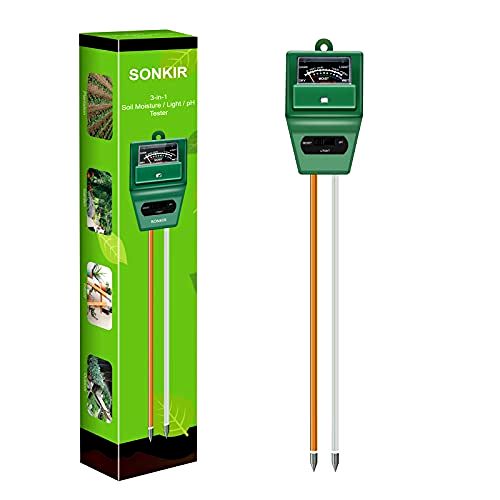
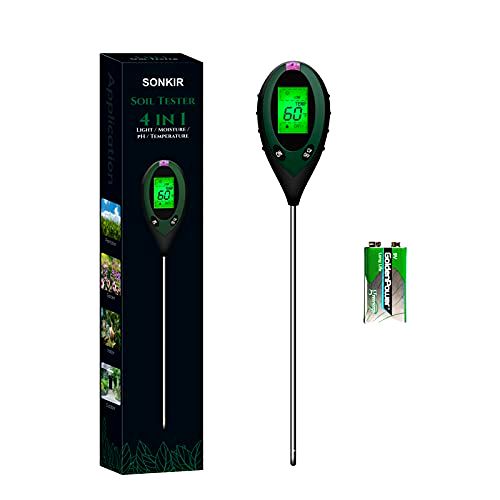
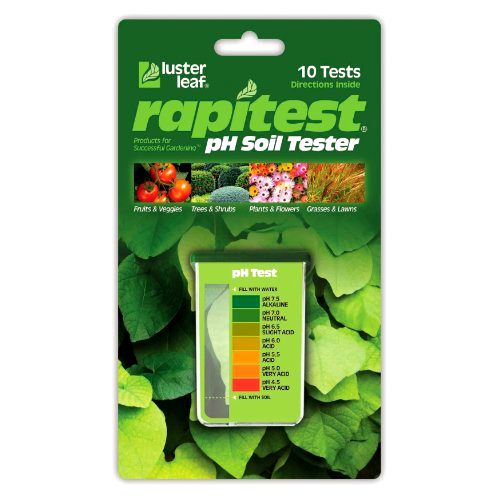
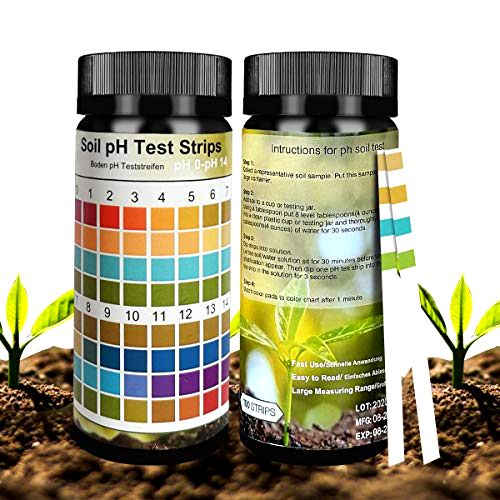
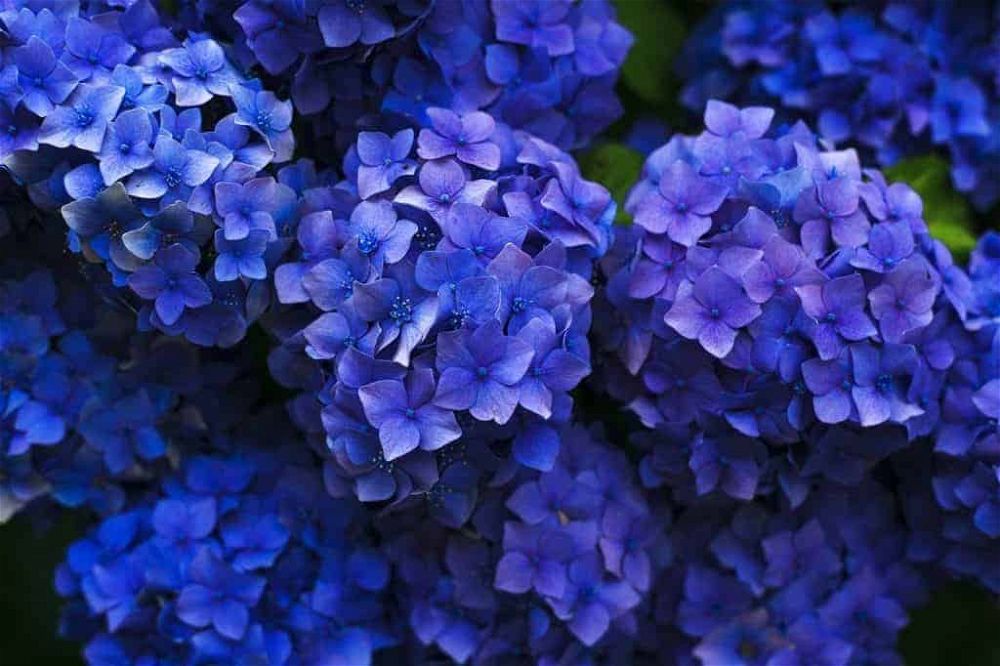


Share